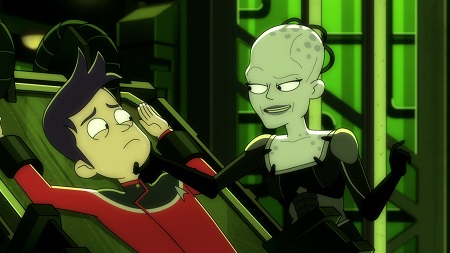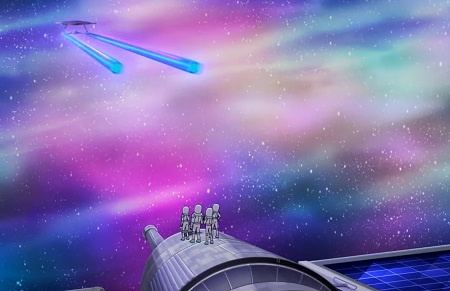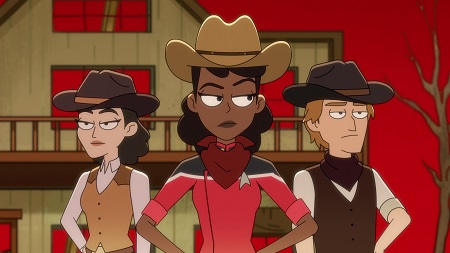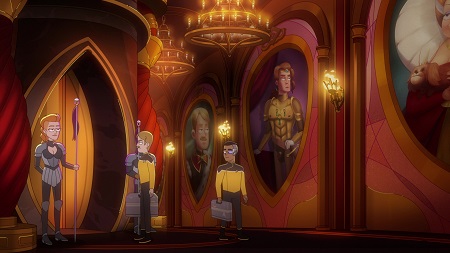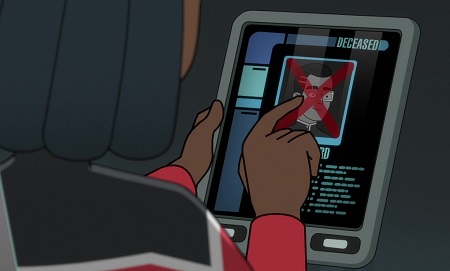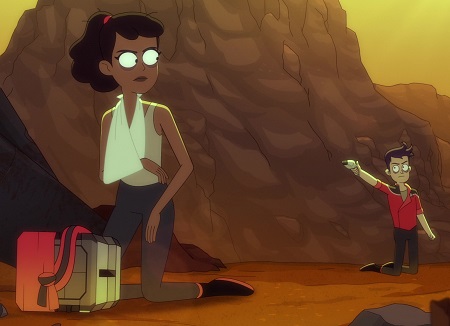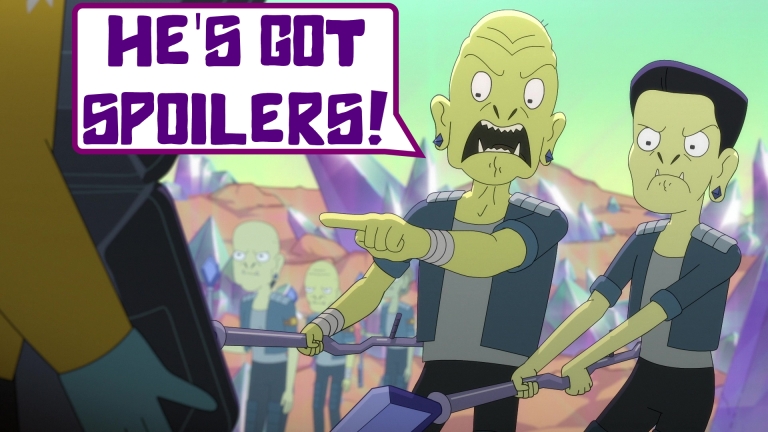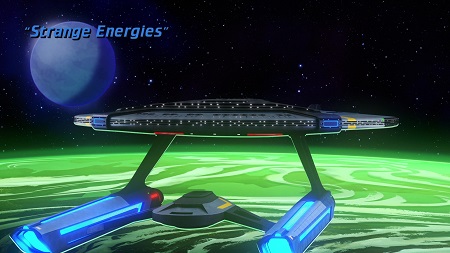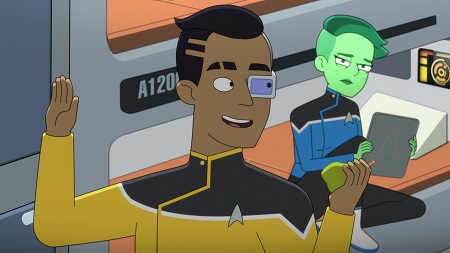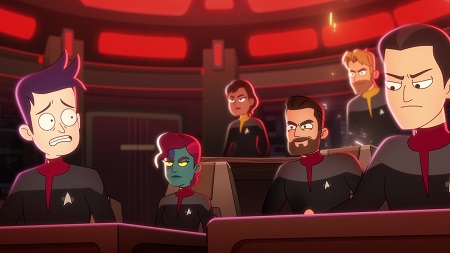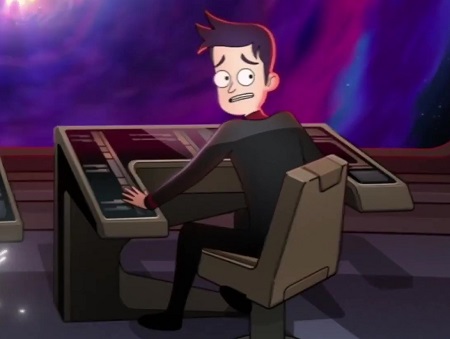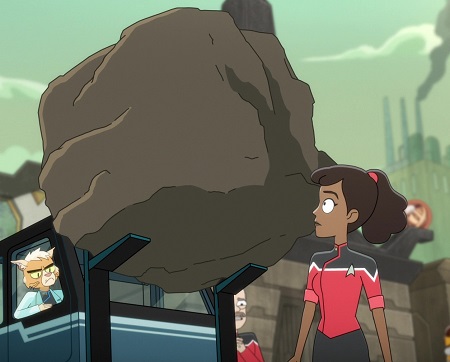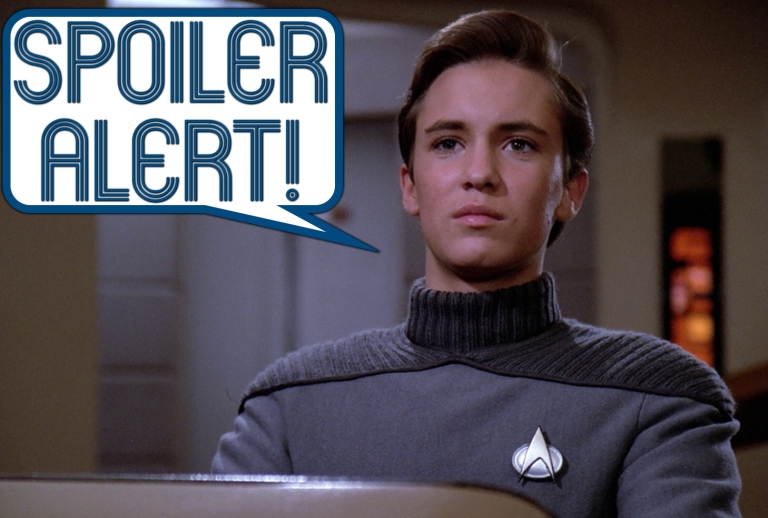
Spoiler Warning: There are spoilers ahead for Star Trek: Lower Decks Seasons 1-3. Spoilers are also present for the following Star Trek productions: The Wrath of Khan, Generations, The Next Generation, and Picard Season 1.
Lower Decks got off to a weaker start than I’d have liked in Season 3, with a couple of episodes that didn’t really manage to hit the high notes that the series has demonstrated that it’s capable of reaching. For me at least, Mining the Mind’s Mines was somewhat of a return to form; an episode that managed to be more enjoyable and much closer to some of the better offerings from Seasons 1 and 2. It wasn’t perfect, and I still find myself judging the Lower Decks by the standards of the absolutely phenomenal Season 2 finale. We aren’t quite there yet, but Mining the Mind’s Mines was definitely a big step in the right direction after an underwhelming start to the new season.
For the first time this season, all four of our main ensigns felt like they got a decent amount to do. Although Tendi was largely off to one side this week, her B-plot still felt well-developed and was given enough time to shine. Lower Decks doesn’t always have time to include everybody, but Mining the Mind’s Mines is a great example of how there’s room to give all of the main characters something to do – even if some stories are bigger than others!
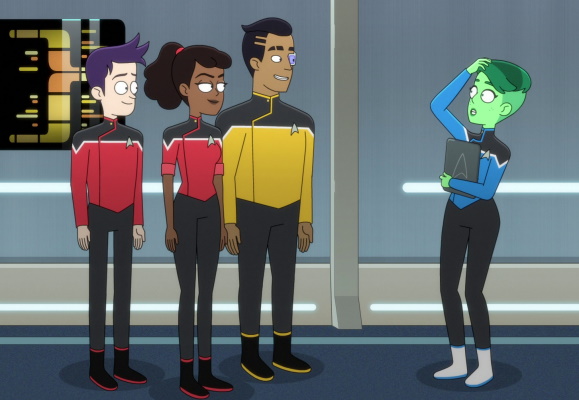
There are two genuinely interesting concepts in Mining the Mind’s Mines, one of which Star Trek as a whole hasn’t dedicated much time to in the past. Firstly, we have the idea of Starfleet officers acquiring reputations or even celebrity status. This is something that Mining the Mind’s Mines looked at through the lens of the ensigns from the USS Carlsbad, and how they came to view the Cerritos as a kind of “Cali-class legend.”
We’ve seen in Generations how the Federation’s media crowded around the retired Captain Kirk, and in Season 1 of Picard how the retired Admiral was interviewed about his role in the Romulan rescue effort, and these scenes certainly hint at the fact that some Starfleet officers end up as household names or at least names that are known and respected within Starfleet.

Within Lower Decks itself, Boimler has often taken on the role of the over-zealous fan, showing how some Starfleet officers (and others) go on to become famous, at least within the ranks! Boimler’s fawning over characters like Will Riker and Tom Paris serves as both a gentle poking of fun at Trekkies and, from an in-universe perspective, as an example of the fame and reverence that some Starfleet officers garner as they go on adventure after adventure.
As someone who’s fascinated with the world-building side of Star Trek, things like this go a long way to making the Federation and the Star Trek galaxy feel real and lived-in. It makes sense that some of the monumental events that we’ve seen on screen would be massive news stories within the Federation, and the names of those involved would become well-known. As a real-world analogy, how many astronauts, explorers, or even soldiers and military officers could you name off the top of your head? Fame (and infamy) come to people in all walks of life, and given the incredible escapades we often see our favourite characters taking part in, it seems perfectly reasonable to think that at least some Starfleet officers would acquire reputations – as would certain vessels and postings!
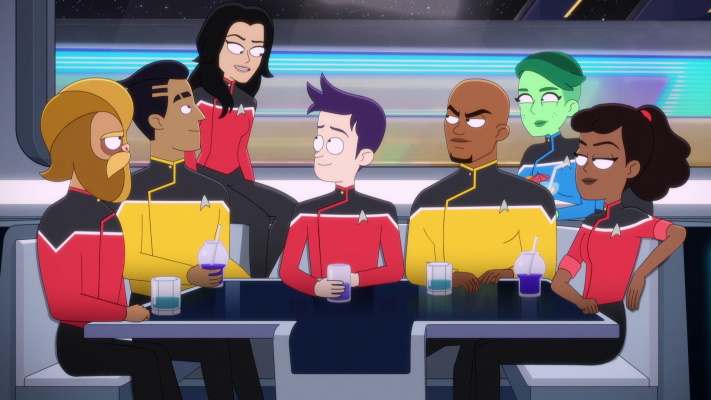
The second point that I found interesting was the way that the episode examined the working relationship between Starfleet and the civilian scientists on Jengus IV. Set aside, for the moment, the conclusion to that particular storyline; I just find it really interesting how there can be a real disconnect between Starfleet and some of these groups of non-aligned scientists.
Again, this is something that makes the Federation feel real and alive in a way that many fictional worlds just don’t. Far from being a flat, one-dimensional plane in which everyone works to the same goals, here we have an example of how factions within the Federation find themselves at loggerheads, competing with one another. Starfleet, as the Federation’s exploration and military arm, gets resources and attention that some civilian groups clearly envy. Even within Star Trek’s optimistic, post-scarcity future, these kinds of disagreements are bound to exist!
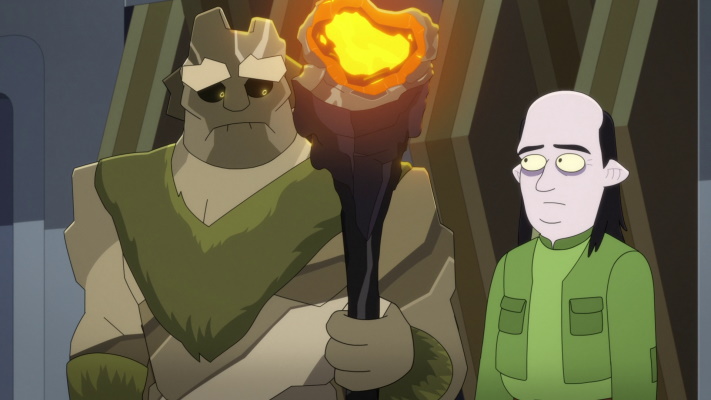
In that sense, Mining the Mind’s Mines picked up a story thread from a long way back in Star Trek’s past. One of the most prominent examples of this “scientists versus Starfleet” divide came in The Wrath of Khan, with Dr Carol Marcus and Dr David Marcus and their research on Project Genesis drawing attention from Starfleet – and later, of course, from Khan!
Psychic mines were a very interesting inclusion in Mining the Mind’s Mines. The way they came across on screen was largely played for comedic effect, but at the same time they felt threatening and dangerous. I’d argue that psychic mines aren’t something you’d expect to find in any other sci-fi franchise; they have an “old school Star Trek” feel to them, as if they might’ve been conceived for one of Captain Kirk’s adventures in The Original Series! Bringing fears and phobias to life is a trope that has been explored in other stories, of course, but the way it was handled here put a uniquely “Star Trek” spin on it.
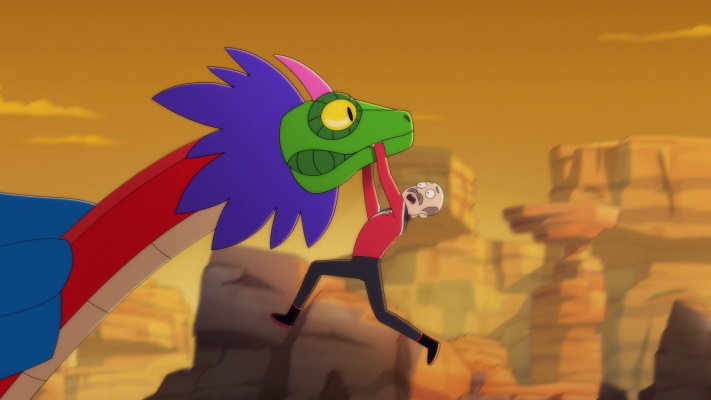
The psychic mines reminded me a little of the Deep Space Nine episode If Wishes Were Horses from Season 1, and also of Voyager’s second season episode The Thaw – so again, this is something that feels like pure Star Trek in both concept and execution. It led to some pretty funny moments in Mining the Mind’s Mines, too, with each of the ensigns given a chance to criticise the others’ fantasies and fears. It didn’t feel as if fun was being had exclusively at one character’s expense; there was no bullying or punching down, which was nice to see.
I don’t think we learned anything about the ensigns through the manifestation of their fantasies and fears, though, which could have been interesting to see. Boimler got a fairly typical “I love Starfleet and want to be a hero” outing that fits perfectly with his character (and could have been a fun way to include a cameo!), Mariner got to see a manifestation of Jennifer the Andorian, who we haven’t seen since Season 2, and Rutherford got to meet one of his heroes: Leah Brahms, who was a character we met in The Next Generation in a rather… complicated story involving Geordi La Forge.

All of these were fun, and it was great to welcome back Susan Gibney as Dr Brahms for a cameo appearance. Interestingly, Gibney was one of the contenders to play Captain Janeway back when Voyager was in pre-production; she was ultimately passed over as producers considered her “too young” to play the role. After a long absence from Star Trek, it was neat to see her make a return, albeit just as a small cameo on this occasion.
I’d like to see more from Mariner and Jennifer; I think there’s the potential for Jennifer to be a positive influence on Mariner, even if their relationship isn’t “exclusive” at first. Giving Mariner someone to talk to outside of the other three ensigns would be interesting, and Lower Decks embarking on its first fully-fledged romantic storyline could be a blast. I’d be interested to see how Jennifer might react to some of Mariner’s rule-breaking and wacky adventures… could she prove to be a calming influence just as much as a partner in crime?
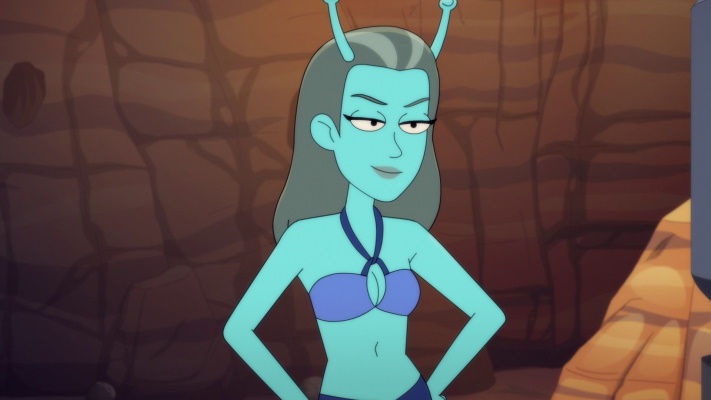
Back aboard the ship, Tendi’s storyline was an interesting one. We’ve seen characters like Troi go through some form of command training before, so it wasn’t an entirely new concept to see this kind of senior officer training. But for someone like Tendi, who’s usually very mild-mannered and doesn’t like conflict or trouble, it was naturally going to pose a challenge. She struggled first of all to stand up to Dr Migleemoo, who clearly wasn’t a good fit in his new role as mentor, but she eventually found her confidence and was even able to save the day as the two divergent storylines came together. All in all, it was a good outing for her!
We’ve seen Tendi “snap” on a couple of previous occasions, so this outburst of assertiveness doesn’t come from nowhere. In Season 1’s Crisis Point we saw her stand up to Mariner, and again to Mariner in Season 2’s We’ll Always Have Tom Paris. Tendi clearly needs to work on her assertiveness if she’s to be an effective bridge officer, because getting her point across when others want to ignore her or talk over her is going to be important! It took Dr T’Ana to help her with that, and although the two only shared a brief scene this week, the relationship between them that has evolved over the past couple of seasons really is one of the best outside of the core friend group. Although Dr T’Ana can be abrasive, she has a soft spot for Tendi that’s really sweet to see.
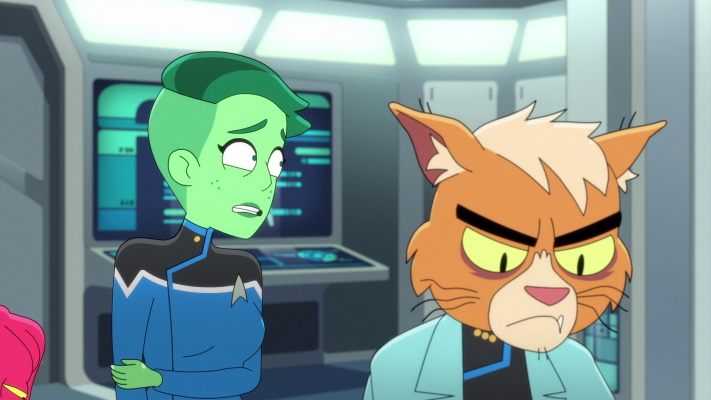
Seeing scientists “go rogue” and work against Starfleet for their own ends was an interesting – and genuinely unexpected – twist. It took a fairly common Star Trek story trope – that of scientists in peril who need assistance – and flipped it on its head, and while that concept isn’t entirely unique, it was well-executed in Mining the Mind’s Mines.
This week’s episode was also a rare outing for Lieutenant Commander Stevens, one of the Cerritos’ senior officers who’s mainly seen in the background. One of the few things we know about Stevens is that he adores Commander Ransom, and that aspect was played up again here. I don’t think it hurts Lower Decks to have characters like Stevens; familiar faces who occasionally have larger roles to play are something past Star Trek shows have taken advantage of, too.

So that was Mining the Mind’s Mines. It was a fun episode with some great laugh-out-loud moments, and Lower Decks seems ready to put an underwhelming start to Season 3 behind it. The psychic mines were a neat concept and allowed for some fun and different imagery, it was great to welcome back Susan Gibney for a cameo as Dr Leah Brahms, and while the main story was engaging and interesting, Tendi’s B-plot felt fleshed out too. I found myself having a good time with Mining the Mind’s Mines and remained engaged throughout.
Beyond the story of the scientists and Scrubble on Jengus IV, though, there was a genuinely interesting take on the idea of Starfleet officers – and certain vessels – acquiring a degree of fame and notoriety within the ranks. The way the ensigns from the USS Carlsbad approached their counterparts from the Cerritos seemed to be setting up the story for conflict and rivalry, but in true Star Trek style they soon found a way to work together – and the Carlsbad ensigns got to meet some of their Cali-class heroes in the process!
Once again, I apologise for the delay in getting these reviews published. Although it may take longer than usual, I still plan to review each episode of Season 3 of Lower Decks, so I hope you’ll bear with me.
Star Trek: Lower Decks Seasons 1-3 are available to stream now on Paramount+ in the United States and on Amazon Prime Video in the United Kingdom and around the world. The Star Trek franchise – including Lower Decks and all other properties discussed above – is the copyright of Paramount Global. This article contains the thoughts and opinions of one person only and is not intended to cause any offence.







